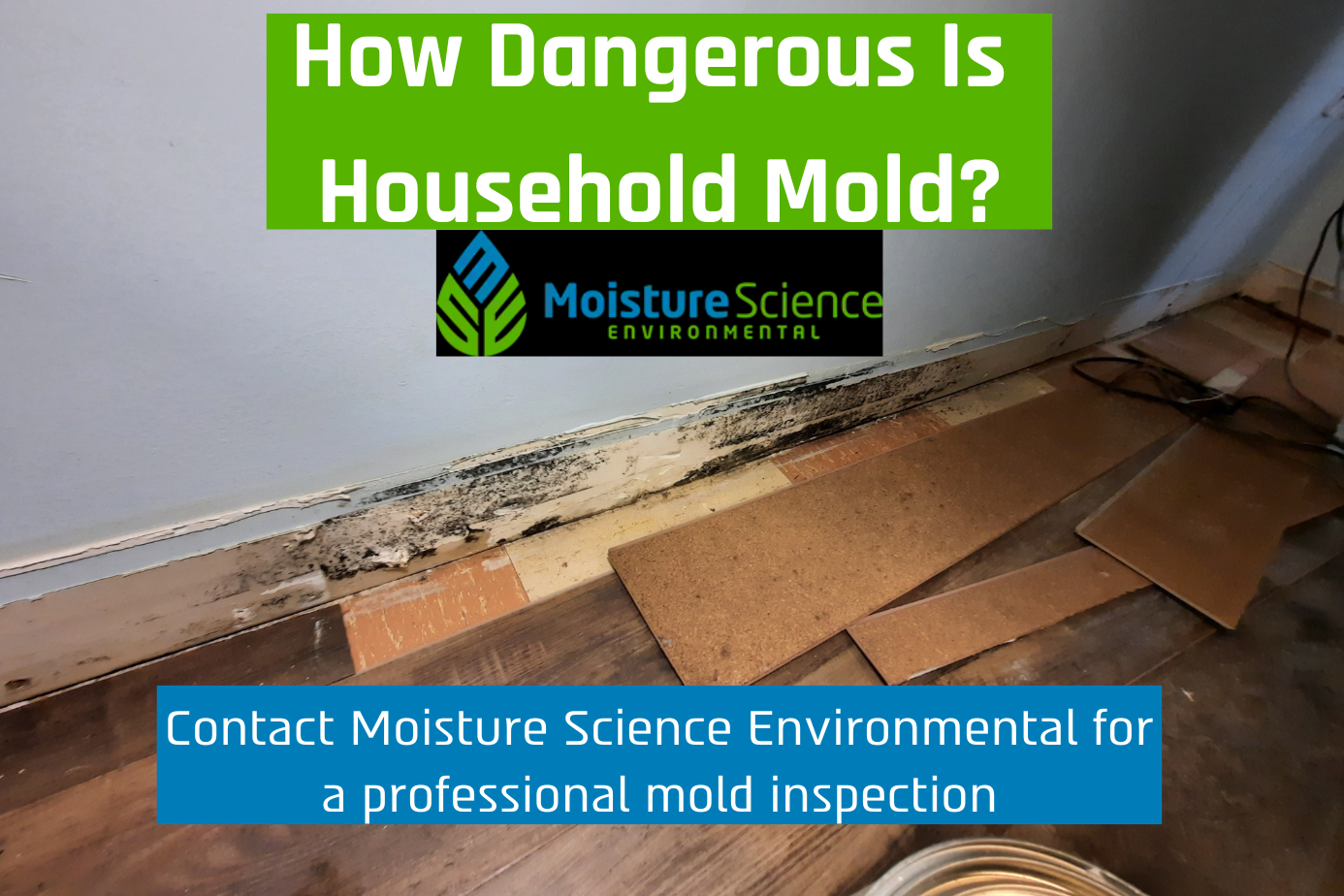It is important to understand that not all household mold is dangerous. In fact, even some dangerous mold can potentially be innocent with low-level exposure. But how does the average homeowner, renter, or business determine that?
Moisture Science Environmental offers professional mold testing to help you understand if the mold in your home or business reaches levels of concern.
Household Mold Statistics and Mold Health Risks
It is estimated that millions of homes in New Jersey and Pennsylvania have unhealthy levels of mold. It is further estimated that mold exposure contributes to over 20% of all asthma cases and approximately 93% of all chronic sinus infections. Many allergy symptoms can be linked to mold exposure, including itchy eyes, itchy skin, coughing, and wheezing.
In some circumstances, mold can have dramatically adverse effects on your health, such as fever, shortness of breath, and vulnerability to other upper respiratory diseases, such as pneumonia or bronchitis. The danger that molds present can depend on how much mold is in your home and your own predisposition to having a sensitivity to mold.
What Kind of Mold Is Dangerous in a House?
There are many kinds of mold that can grow in your home. Many types can be harmless, however, some have devastating effects on your health. Below are some of the most common types of mold in your home that can cause health problems:
- Fusarium – A pale mold with a cottony texture that tends to grow in plant debris and soil. It can sometimes be found in very damp areas such as underneath carpeting, inside drywall, or in HVAC systems.
- Chaetomium – Commonly found where a home has been damaged by water exposure. They typically have a fuzzy texture and are white or blue-green in color.
- Aspergillus – A family of molds that make up some of the most common types of molds found in the home. Aspergillus mold typically has a powdery and dark green-brown color.
- Alternaria – Often found in fabrics, cardboard, or canvas materials, it typically produces club-shaped pores and grows in thick colonies that vary in green/black/gray colors.
- Stachybotrys – Commonly referred to as black mold. It’s a dark color and often produces a mildewy smell. This can be one of the most dangerous molds and should be addressed immediately if found in your home.
Unsure if you have dangerous mold growing in your home or business? Contact us today for an expert mold inspection.
What Is Mold Exposure?
Mold exposure refers to situations in which a person has been exposed to mold spores. Mold spores are tiny reproductive cells that the mold develops and releases into the air. Because mold spores are released into the air, it is not uncommon for people to breathe in these spores. We breathe in mold spores every day; breathing in too much can cause allergic reactions, headaches, body aches, coughing, and itchy eyes or skin. The more mold a person is exposed to, the more severe these symptoms will likely be.
How Long Can You Live in a House With Mold?
Once mold begins to grow and produce spores, mold exposure symptoms can begin to manifest themselves within a day or two. If the mold is in a part of your home that is not visited very frequently, such as in your attic or basement, you may not realize that the mold is in your home until it is very well established and has formed significant colonies.
If you see mold growing in your house, take steps to eradicate it as soon as possible: contact MSE to test mold and remediate the issue.
What to Do if Your House Has Mold?
The first thing you need to do is identify if you have mold in your home either visually or by odor. Mold prefers damp and humid environments and is likely to grow in basements, closets, attics, around your showers and sinks, and along your windows and door frames. Regularly inspect these areas to ensure that there is no mold growth in these areas.
If you find small levels of mold, you can try treating the spot with a store-bought mold and mildew remover. Another option is to spray the mold with vinegar, hydrogen peroxide, or lemon juice. The high acidity can kill the mold as well. You can even try mixing baking soda and vinegar on really tough mold spots to safely remove mold.
Moisture Science Environmental understands a professional mold treatment isn’t required for all home and business jobs. However, some tasks are too large and some DIY mold removal projects may release spores into the air, making it worse. If you have any concerns, please get in touch with us.
Do I Need a Professional Mold Inspection?
If your at-home remedies are not having an adequate effect on your home’s mold problem, you may want to seek the help of a professional. At Moisture Science Environmental, we have experience killing and removing molded areas in your home quickly and cost-effectively. We then work to remediate the problem so it doesn’t return.
MSE is available to discuss your mold problem and help you decide the right course of action for dangerous mold in your house.



